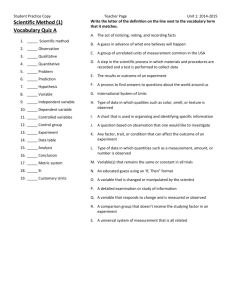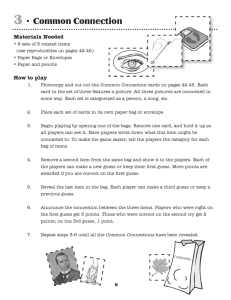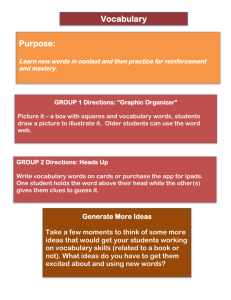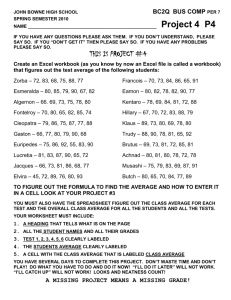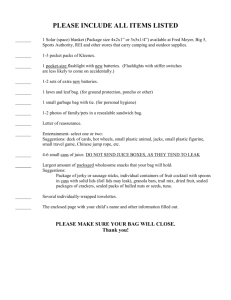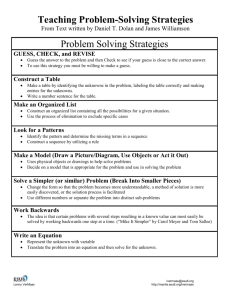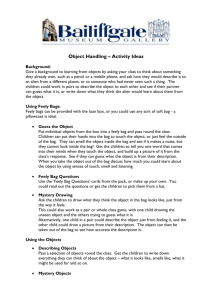Structure/Function Lab
advertisement
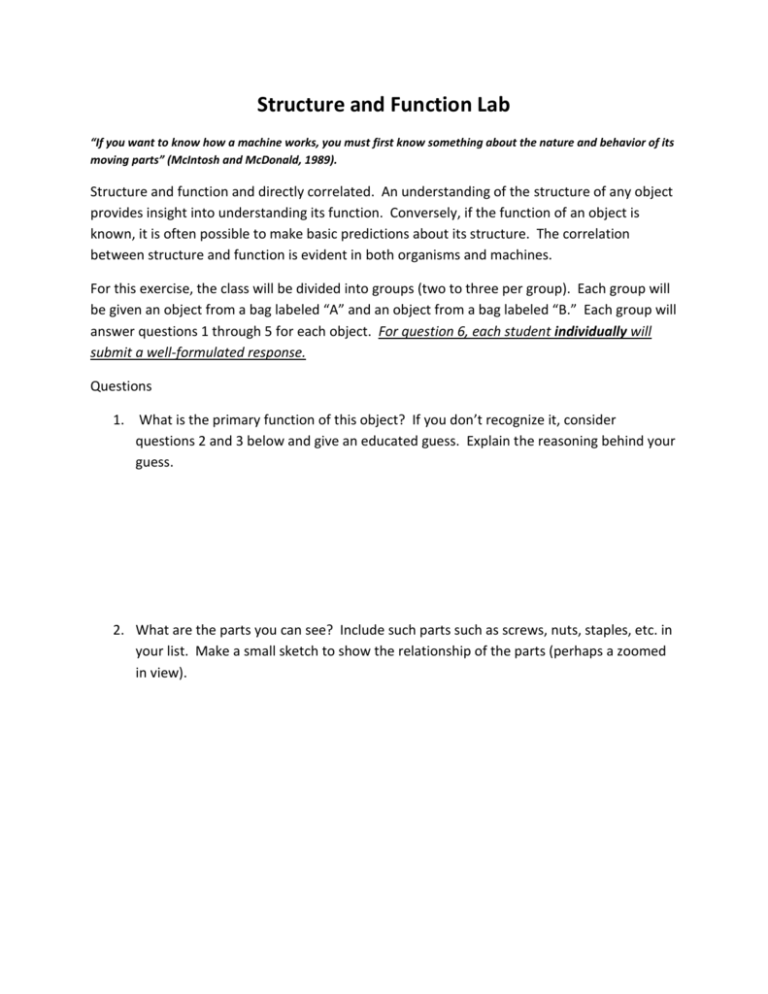
Structure and Function Lab “If you want to know how a machine works, you must first know something about the nature and behavior of its moving parts” (McIntosh and McDonald, 1989). Structure and function and directly correlated. An understanding of the structure of any object provides insight into understanding its function. Conversely, if the function of an object is known, it is often possible to make basic predictions about its structure. The correlation between structure and function is evident in both organisms and machines. For this exercise, the class will be divided into groups (two to three per group). Each group will be given an object from a bag labeled “A” and an object from a bag labeled “B.” Each group will answer questions 1 through 5 for each object. For question 6, each student individually will submit a well-formulated response. Questions 1. What is the primary function of this object? If you don’t recognize it, consider questions 2 and 3 below and give an educated guess. Explain the reasoning behind your guess. 2. What are the parts you can see? Include such parts such as screws, nuts, staples, etc. in your list. Make a small sketch to show the relationship of the parts (perhaps a zoomed in view). 3. What is the function of each part? Include all parts. 4. Could this item be different in some way (shape, size, material, other physical characteristics like color) and still perform its function? If so, in what ways? If not, or if differences would only cosmetic, explain why its configuration is essential to its function. 5. Could any of the parts of the object be removed without affecting its function? 6. (Formal response from each student required) What is meant by the idea of structure/function correlation? Illustrate your explanation with at least two examples from the lab and one example NOT from the lab. Consider other simple machines or tools, or even look to the biological world for inspiration. Your answer must be a minimum of one well-developed paragraph.


